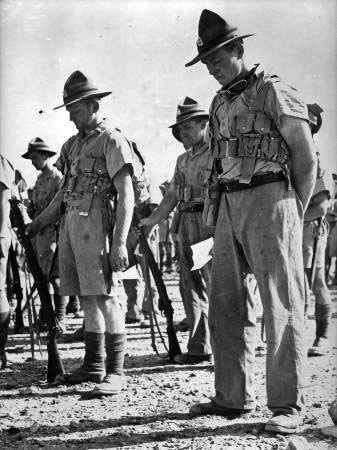Thursday 25 April 1940
 |
| Heinkel He 111 over Norway, 1940. |
To the east, in the Osterdal, the Germans also advance.
At Hegra Fortress, the German shelling and Luftwaffe attacks continue. The Luftwaffe utilizes a seaplane carrying a 1,800 kg (4,000 lb) bomb. The bomb destroys the area surrounding the fortress and sends shrapnel flying literally for kilometers.
Norway Air Operations: The Luftwaffe attacks the new RAF Gloster Gladiator base at Lake Lesjaskog outside Andalsnes throughout the day. In between, they give some support to the British at Kvam.
In the morning, a single Heinkel He 111 of Stab/LG1 drops its bombs and destroys four Gladiators and injures three pilots, including Squadron Leader John William Donaldson (concussion). At 13:05, another bombing attacks destroys four more Gladiators. Two of the Gladiators get airborne and bring down a Heinkel at 14:00 south of Vinstra, near Dombås. They then damage another Heinkel from 6/LG1, wounding two of the crew. The last five useable Gladiators are then withdrawn north to a temporary landing ground at Stetnesmoen, near Åndalsnes. The pilots then shoot down a Heinkel of II/LG1 which had been attacking British shipping near Andalsnes. Another of the Gladiators is destroyed during the evening.
The Luftwaffe attacks and sinks three British armed trawlers at the base at Andalsnes: HMS Bradman, Hammond, and Larwood.
The RAF sends 18 planes to bomb Oslo and Stavanger.
Battle of the Atlantic: British vessel Margam Abbey hits a mine and sinks in the Thames estuary.
RAF bomber command attempts a minelaying operation with 28 aircraft that does not get to its target location. The Luftwaffe night fighter force downs one of the bombers.
Convoy OA 136 departs from Southend, Convoy OB 136 departs from Liverpool.
Finnish/Swedish Relations: Sweden proposes a joint defense of the Aland Islands with Finland. The dominant powers in the Baltic, namely the Germans and Soviets, immediately raise objections.
US Navy: The aircraft carrier USS Wasp (CV 7, Captain John W. Reeves, Jr.) is commissioned.
US Government: President Roosevelt issues a proclamation recognizing the state of war between Germany and Norway. He also issues proclamations barring Norwegian submarines from US territorial waters and extending the Neutrality Act to cover the situation.
Palestine: David Ben-Gurion visits for the UK, and thence the United States.
Canada: Canadian troops serving in the BEF hold a ceremony honoring the battle of Vimy Ridge, where they fought the Germans 23 years earlier.
Australia: The nation honors Anzac Day on its 25th anniversary, with Australian troops currently in Egypt.
 |
| Australian troops in Egypt honoring Anzac Day, 25 April 1940. |
April 1940
April 1, 1940: Weserubung is a GoApril 2, 1940: British Subs On Alert
April 3, 1940: Churchill Consolidates Power
April 4, 1940: Missed the Bus
April 5, 1940: Mig-1 First Flight
April 6, 1940: Troops Sailing to Norway
April 7, 1940: Fleets At Sea
April 8, 1940: HMS Glowworm and Admiral Hipper
April 9, 1940: Invasion of Norway
April 10, 1940: First Battle of Narvik
April 11, 1940: Britain Takes the Faroes
April 12, 1940: Germans Consolidate in Norway
April 13, 1940: 2d Battle of Narvik
April 14, 1940: Battle of Dombås
April 15, 1940: British in Norway
April 16, 1940: Germans Cut Norway in Half
April 17, 1940: Trondheim the Target
April 18, 1940: Norway Declares War
April 19, 1940: Dombås Battle Ends
April 20, 1940: Germans Advancing in Norway
April 21, 1940: First US Military Casualty
April 22, 1940: First British Military Contact with Germans
April 23, 1940: British Retreating in Norway
April 24, 1940: British Bombard Narvik
April 25, 1940: Norwegian Air Battles
April 26, 1940: Norwegian Gold
April 27, 1940: Allies to Evacuate Norway
April 28, 1940: Prepared Piano
April 29, 1940: British at Bodo
April 30, 1940: Clacton-on-Sea Heinkel
2019






